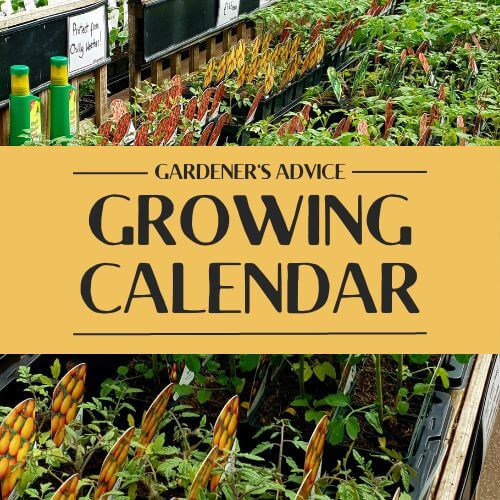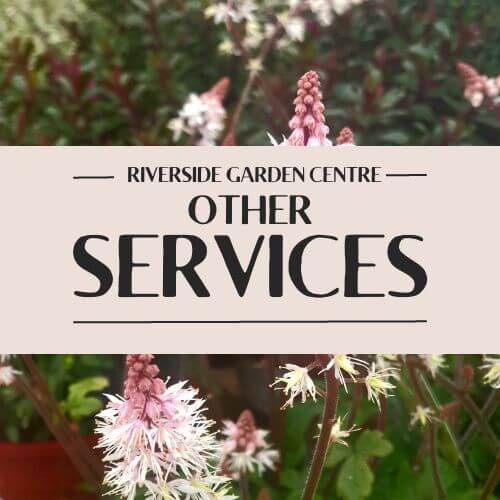Choosing and Planting a Tree
Posted By: Category: Plant Care, Seasonal AdviceDownload this guide as a pdf or pick on up from Riverside!
Choosing a Tree
A tree planted in the right spot will enhance any garden, many with seasonal interest throughout the year: flowers in spring, colourful foliage in summer, autumnal colour and berries, and structure when bare in winter. Trees also provide important habitats for birds, insects and other creatures.
When?
- The ideal time to plant a tree is in late autumn till mid-spring when most trees are dormant and can withstand the disruption.
- In mild weather, with damp soil but after the threat of frost.
- You can purchase one before planting - just make sure you don’t let it dry out. Water freely but allow good drainage.
Where?
Think about...
- It’s mature size - it will grow!
- The area of shade it will cast on nearby plants and your house.
- Not too close to a house as root-spread maybe affect structure. As a general rule, plant the distance of its mature height away from structures.
- Most varieties of fruit tree need to be in a reasonably sheltered, sunny location in order to thrive and produce good crops
Is it Grafted?
Many trees designed for smaller gardens and many fruit trees are ‘grafted’ to control the tree’s size. The spot where the rootstock is grafted to the species of tree can usually be seen a short distance up the trunk from its base. Avoid burying the graft when planting your tree.
Mycorrhizal Fungi
Trees love it! The fungi attaches itself onto the roots, continues to grow and absorbs more nutrients and water for its host, keeping both healthy.
Pollination Groups
For fruiting trees, pollination needs to occur. Fruit trees can be self pollinated or may require another flowering tree to help it produce fruit.
Within the city of Bristol, there will be, almost always, another flowering tree close by that will pollinate your tree. Therefore, don’t worry about having a pair yourself.
Fruit Tree Rootstocks
What rootstock the tree has been grown onto will affect its characteristics. Find it on the label, after the tree name.
M27 - very dwarf*
M26 - semi dwarf
M116 - medium
MM106 - semi vigorous
MM111 - vigorous
M25 - very vigorous
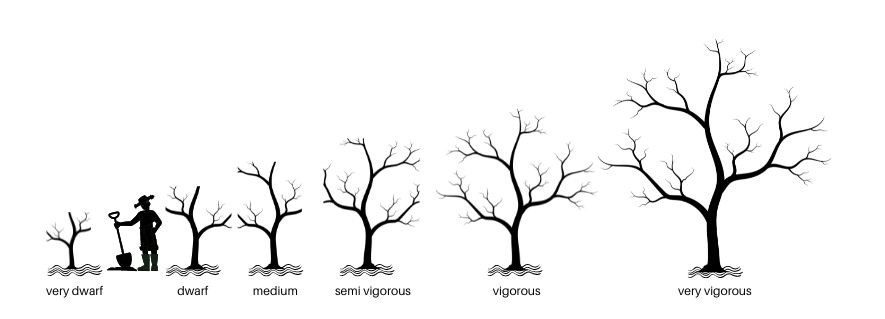
How to Plant a Tree
You will need:
A fork, a spade, a bucket, fresh compost, tree stake and tie and of course the tree!
1 Soak the rootball
Place the rootball (still in the pot) in a bucket of water until fully saturated (about an hour).
2 Dig a hole
The hole should be the same depth as the rootball and 3 times as wide. Use the pot as a guide! Loosen the outer soil with a fork.
.jpg)
3 Loosen the roots
Remove the pot and gently loosen the roots if they are tightly packed. If the pot is tight, don’t pull, better to cut the pot. You want the roots to grow out and spread in its new spot.
4 Position your tree
Place the tree in the hole. Where the roots meet the trunk should be at ground level - a cane can be useful to help judge this. Take a step back and see the tree in its space. Getting the right position now is important as it won’t be moving again! Trees will have a best side and so rotate it so you get the best view.
5 Refill the hole
Refill around the rootball, making in compact using your boots as you go. Air pockets will make the tree wobble, so check the tree is still upright afterwards. If your soil is very heavy, refill the hole with a mix of 50% existing soil and 50% multipurpose +John Innes compost.
6 Protect your new tree
A tree guard or spiral at the base of the tree will stop rabbits and other wildlife nibbling the bark.
7 Water well and mulch
Water the tree well to soak its rootball in the new soil. Spread mulch (buy in bags or make your own with organic matter) over the surface of the soil around the base of the tree in a 5-8cm layer. Mulch will help to hold moisture and deter weeds.
8 Add a tree stake
Insert a tree stake with a mallet at a 45 degree angle (towards the wind if you know) and 60cm away from the base. Support the tree with it using a flexible tree tie. Anchoring the tree will allow the rootball to establish its roots without moving, whilst also letting the trunk flex as it grows, too strengthening it.
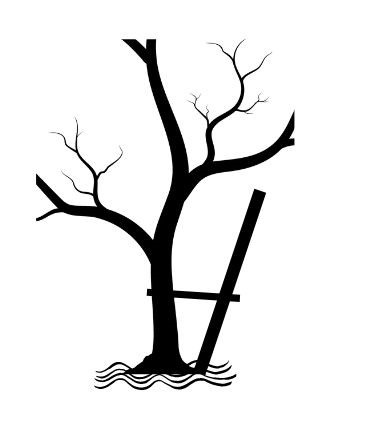
9 And enjoy!
Your new tree is now planted! Help it grow successfully by monitoring it regularly, annually topping up the mulch around the base. In its first 2 years, watering is important, especially during dry spells, and adjusting the tree tie as it grows, only removing it once the tree is firmly rooted.

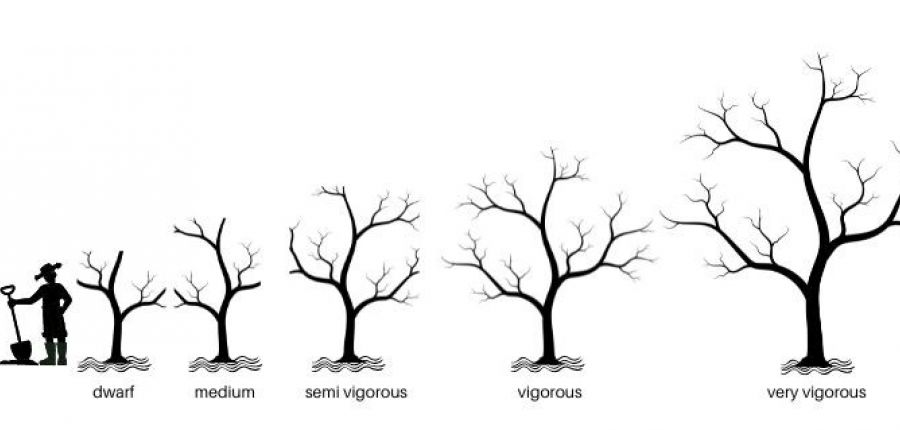
.jpg)
.jpg)

